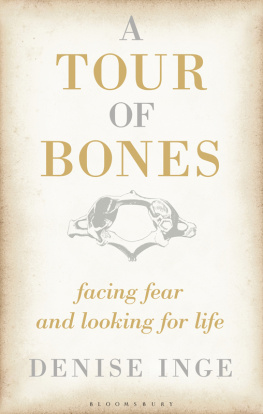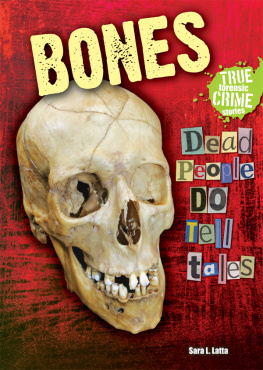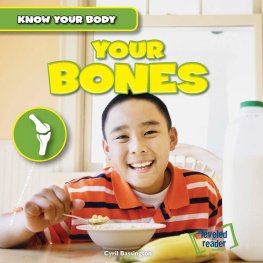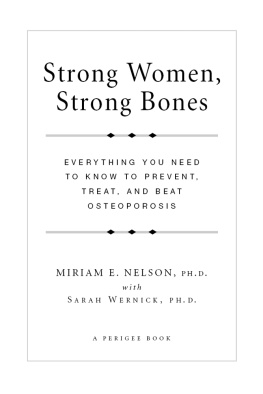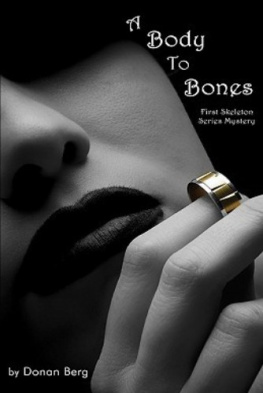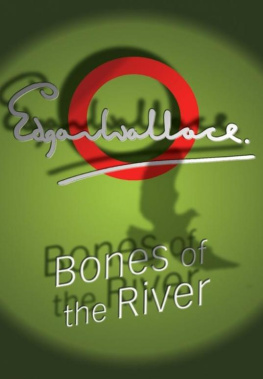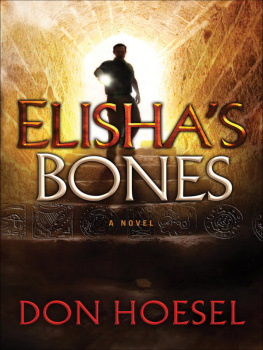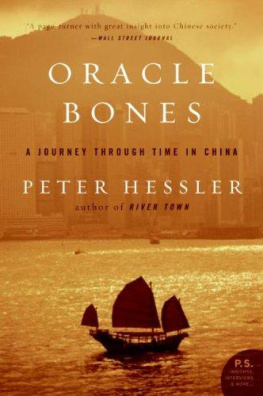A Tour of Bones
For Eleanor and Olivia,
daughters of my heart
A Tour of Bones
Facing Fear and Looking for Life
Denise Inge
Contents
I live over dead mens bones. Dead womens, too, for all I know. Every day when I leave my house to escort my children to school, I walk over them. Beneath my hectic life they lie, dormant, deteriorating in increments, shifting perhaps imperceptibly when the ground around them shivers. In a perfect unity of name and action that I cannot begin to emulate, they do what they are, they remain. They make no noise about it. They insist on nothing, demand or require nothing of me except the admission, which I make seldom and reluctantly, that one day I shall join them in bare beauty, stripped even of flesh and sinews, disjointed, naked and alone.
* * *
How I came to be living in a house with a charnel house attached to it is a long story. My eighteenth-century Mennonite ancestors who ploughed out their Pennsylvania furrow in Plain Folk bonnets and beards, eschewing electricity when it came, disavowing the automobile, would no doubt be dismayed to see me returned from America to England, savouring traditions they found repugnant, finding in the old world a new and unexpected liberty. Way leads on to way, I think Id tell them, calling on a poet from my childhood, Robert Frost. You fall in love with countries and with people; sometimes unexpectedly you fall in love with a life. Before you know it half that life is spent. Two roads diverged in a yellow wood, Id answer, and I could not travel both.
You never know where a small decision will take you. You never know. I came to England as a tourist to find out what moors and hedgerows were. I came to cycle in Oxford and punt on the Cam, and to ride a double-decker bus. Loud and shy, taking up too much room on the sidewalks and unfamiliar with a pint of beer, I learned English things like cream tea and scones, and how to make custard, and that part of loving summer is to love the sharp thwack of a cricket ball on willow wood. I learned to pull the velvet sally on a bell rope. I made some friends and joined a religious community and eventually figured out how to light gas fires without them exploding and to drive on the other side of the road.
Then one January day, stranded in London by a freak snowstorm, I phoned a friend of a friend who had room in a house he shared that was not far away; he said I could weather out the storm, and that became my future. Not immediately of course, because he had given himself to God and I was going to teach in Casablanca and learn French. We parted bravely and declared our long-distance love in letters of the kind that wont exist any more now that people spell their luv by thnx 4 2day and i m so in2 u. Ours were paper letters which one opened crisply with a slice, and which crossed and double-crossed slowly in Moroccan mail, confusing us both so badly that we parted.
When the thin blue aerogram came to say he thought he should remain single I posted a blistering reply, the tone of which I regretted even as the finality of its soft thud sounded in the bottom of the box. I sat by that yellow postbox till the postman came but failed to secure the letter I could not prove was mine, whereupon I saw no recourse but to buy a tawny bottle of whisky from the pay packet I had been given that day and hand the entire remainder of my monthly salary, in cash in its long white envelope, to the beggar stationed on the cracked pavement outside the squeaking glass door of the seedy off-licence on Boulevard des Almohades . It made him weep with ecstasy from his torn bit of cardboard, and left me not only severely hung-over for days but also penniless for an entire month, during which I recomposed myself and decided to stop over in London to say a polite rather than confrontational goodbye before heading back to America for good. But nothing goes according to plan. He introduced me to his family. Instead of a polite farewell there was a sunny summer after which eventually I married him, and my original tourist trip that had already turned into several years became forever.
I have since acclimatized my way through decades until, suddenly, I find I have lived as long in England as I ever did in America, and am rooted in an English way of life. America, meanwhile, has gone on changing in my absence so that I am now almost as strange to it as I once was to England. Not entirely at home in either, not quite alien, I belong temporarily wherever I reside, which being married to an Anglican clergyman means possibly anywhere. Right now it means a large townhouse next to the cathedral and overlooking the river Severn in Worcester with a curious history including dereliction, crusty canons, ladies in crinolines, Sir Edward Elgar, Izaak Walton, medieval wayfarers, Benedictine monks and several hundred sheltering skeletons.
* * *
When my guests arrive, the wide front door swings open smoothly on its beautifully balanced hinges. They pass a velvet-trimmed curtain and step into a stone-flagged hall with high ceilings and in winter, if we are lucky, a roaring fire. They are welcome. Crossing this threshold, they have also stepped over dead mens bones. Even my bright-eyed puppy who, being a dog, ought to have a sixth sense about bones, pays them no heed. When I stop to think about this, which I have only recently begun to do, it seems strange to me that none of this, the door through which we have stepped, the floor on which we walk, the medieval stone foundations out of which the later brick elevations rise, would be here were it not for the bones below.
This townhouse was built exactly on the foundations of an earlier medieval dwelling that housed the charnel house priest whose job it was to pray for the souls of the departed. The term charnel house comes from the Latin carnalis , meaning flesh. Ossuary is another term, from the Latin os for bone. The Germans call it Beinhaus , or bone house, which is the most straightforward term I have come across, since a charnel house is exactly that. In past times, a charnel house was a simple solution to the practical problem of what to do with the unrelenting accretion of human remains. Many of the European charnel houses are medieval; some the result of physical changes to cities in the late eighteenth and early nineteenth centuries. Others are the result of plagues or wars. Few of them are still receiving new bones, as ours occasionally is.
The imprint of that medieval priests house became the blueprint for this one, its previous presence the justification for construction. The whole reason our house exists, in this particular place, in this shape, is because there once lived a priest given the task of praying for the souls of those whose bones rested here beneath his own each night. He and the bones were brothers. Brothers in the monastic sense, because the charnel house and its priest were part of a Benedictine Abbey that included Worcester Cathedral, which is just next door, and the bones would have belonged to his fellow monks; but brothers too in a philosophical sense, because he lived with a constant sense of connection to those who had gone wherever souls go and left their bones behind. His house and its small chapel were a kind of left luggage room on a spiritual railway bearing always an expectation of return or reunion. At the resurrection of the dead these bones would live again with bodies more beautiful and more whole than any could imagine. And his would be among them.
Few of us live with such a perfect expectation. Many believe in an afterlife, some believe in nothing at all, but few have a well-developed notion of what life after the resurrection might mean, who we may find there, or what the terms of our relating to each other might be. The footprint of his house and mine is the same but I walk in it as in a pair of outsize shoes, aware always that our modern way of thinking has created slippage where medieval security might have been. Maybe I am wrong; maybe little about the unprovable afterlife has ever been secure, even in a medieval monastery, and that is precisely why he was given the job of praying.

